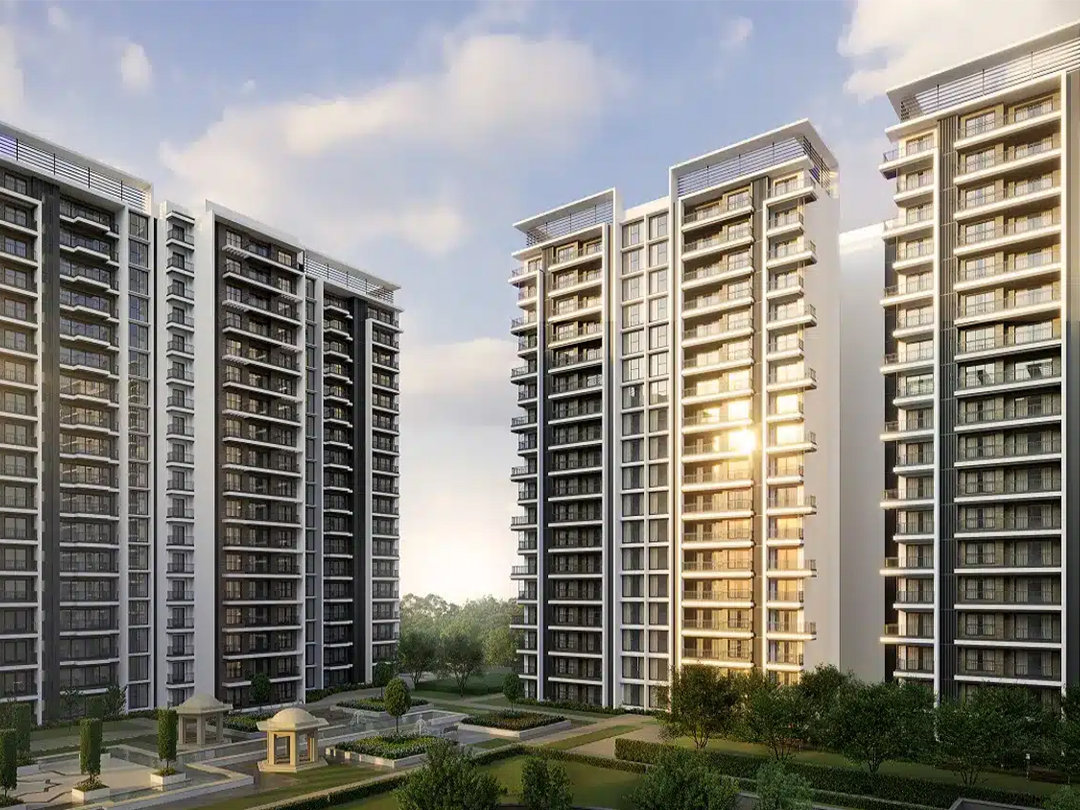More than 3 lakh residential units are expected to be acquired, marking a 15-year high in Indian home sales in 2023. They will increase by 2024 as a result of decreased inflation pushing more hesitant candidates forward and general optimism over the Indian economy.
There’s another important aspect that will encourage more individuals to become homeowners. High-quality developers that are delivering a steady stream of new residences by finishing their projects quickly.
According to Anuj Puri, head of real estate consultant Anarock group, “timely project completion is giving a major boost to overall consumer sentiments, and they are coming forward to take the plunge” (Business Insider India).
Housing Become More Expensive Yet Still Reasonably Priced
Sales of residential homes have increased 30% over the current holiday quarter compared to 2022. The high demand and recent releases have contributed to the increase in property prices. In certain micromarkets located in the vicinity of Hyderabad, Bangalore, and Pune, prices have increased by a range of 25-33%.
According to Anshuman Magazine, chairman & CEO of CBRE’s India, South-East Asia, Middle East & Africa division, “capital value growth is expected to witness divergent trends across micro-markets and property categories and will be largely governed by unsold inventory levels and inventory overhangs.”
Wagholi in Pune, Gachibowli in Hyderabad, and Whitefield in Bangalore are a few micro markets where prices have increased well. The average increase in real estate prices for the top 7 cities has been between 8 and 10% overall. According to Anarock, there will be a minimum of 12% growth in 2024.
Price increases are also anticipated as a result of developing infrastructure. The western suburbs’ Mumbai Metro Connectivity has greatly increased demand for properties in the Andheri-Borivali area.
Infrastructure Development Takes Place In Many States And Cities
In light of the massive infrastructure development that is taking place in many states and cities, we anticipate the formation of fresh micro markets as well as the strengthening of the ones that are already there.
Similar to this, Dhaval Ajmera, director of Ajmera Realty, tells Business Insider India that “the demand for housing in other cities and peripheries is expected to grow, owing to the outstanding connectivity improvement, leading to price growth across the targeted micro-markets.”
Even though home prices could rise, if interest rates relax, there’s a potential that purchasing a home will cost less overall. For the seventh time in a row, the central bank maintained basic interest rates in December. Some analysts anticipate that a cycle of decreasing interest rates may begin in the coming year.
“In 2024, we are likely to see a revival with affordability levels projected to be on an improving path as macroeconomic ground rules support a repo rate reversal and thereby interest rate drop that could provide another fillip to the residential sales market,” according to a report by JLL titled Home Purchase Afford.
The Criterion Is Space, Not Money
Indians are willing to spend more money and may never lose their enthusiasm for larger, more opulent homes. The trend of individuals requiring greater space during the lockdown period won’t go away as quickly as businesses abandoned work-from-home rules.
People will likely continue to seek for workstations inside of houses that allow for flexible scheduling and remote work due to lingering hybrid work rules. It suggests a sustained change in behavior.
Even with the approaching changes to the legislation regarding remote employment, there is still a significant desire for large homes among buyers. Manju Yagnik, VC of Nahar Group, stated that this trend is expected to continue, transforming the real estate market in 2024 as individuals search for residences that combine comfort, utility, and adaptation to changing work settings.
Indians will no longer choose to purchase a property just based on cost. Numerous other issues have entered the picture, including sustainability, communal living, health and safety, and the incorporation of smart home technology.
“The market for this segment will grow going forward as home buyers are anticipated to continue exhibiting strong preferences for projects that offer improved accessibility to necessary infrastructure, ancillary amenities, and thoughtfully designed indoor and outdoor spaces,”.
New Opportunities In Tier-2 And Tier-3 Cities
Demand for branded houses is also rising as a result of growing prosperity in smaller towns and cities. Many developers want to expand outside the top eight locations where there is growing demand for houses with a focus on amenities. Tier 2 and Tier 3 cities like Lucknow, Jaipur, Ahmedabad, Coimbatore, and Chandigarh receive the majority of this demand.
According to Chitnis, “the superior structure that many of these Tier 2 and Tier 3 cities provide, along with their inexpensive prices qualified to big cities, help the real estate market in these sub and major cities.”
NRIs are also quite interested in purchasing a house in these locations, particularly Kochi and Ahmedabad. That will account for a significant portion of the new demand in the upcoming year. Developers claim that these areas provide lucrative opportunities for both homeowners and developers.
“We anticipate continued real estate growth well outside the top 7 and 8 cities. Because of the increasing demand and good development prospects in emerging markets, we expect large branded properties to soar. Increased connection, shifting lifestyle preferences, and infrastructure are the main drivers of this increase.
Source-ET




